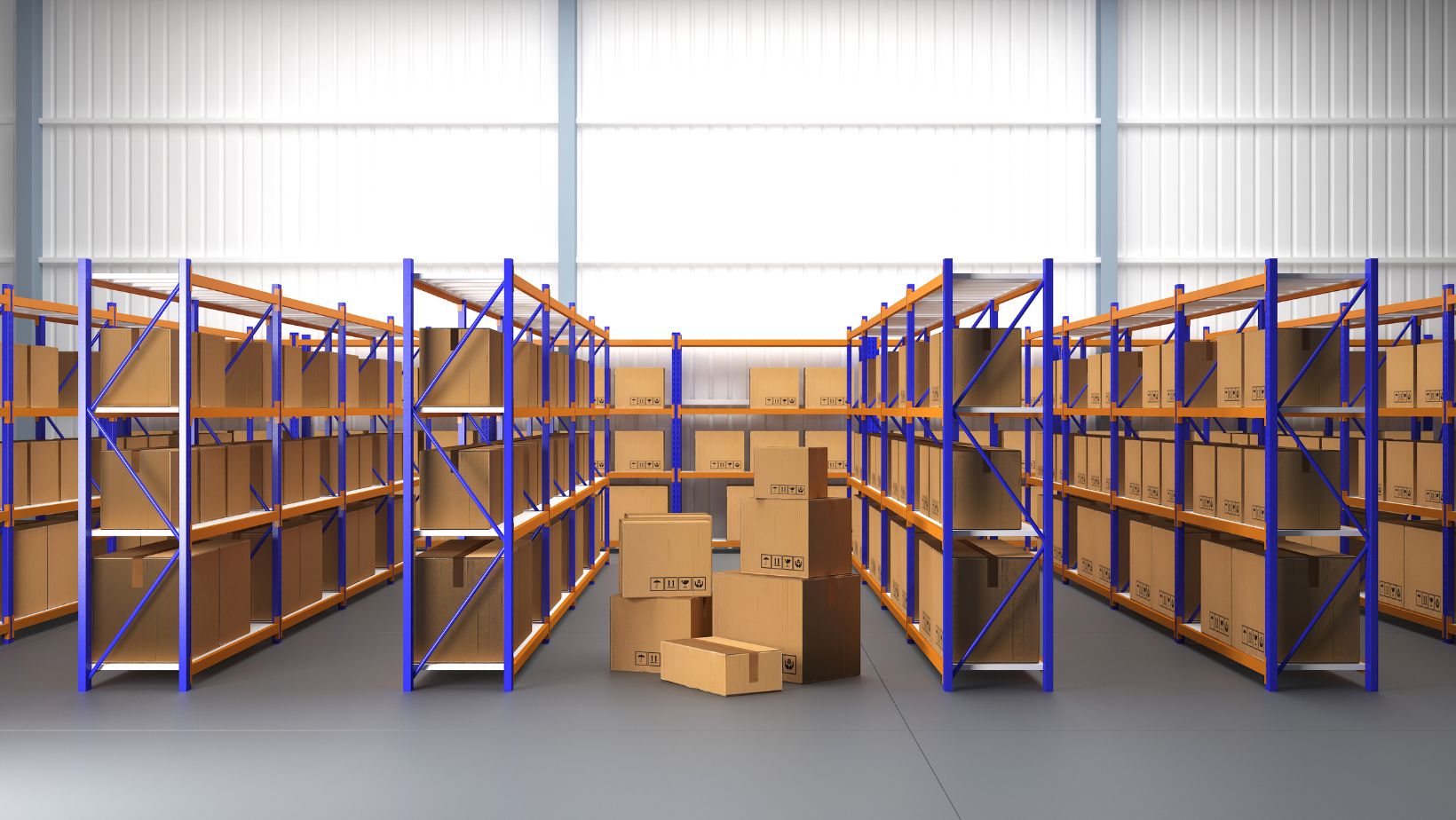
In this detailed guide, you will learn more about the different kinds of pallet racks, what makes each one special, and how it is applied.
Selective Pallet Racking
Selective pallet racking often likened to a well-organized library, operates on a straightforward principle. It arranges pallets in horizontal rows with vertical columns, creating easy-to-navigate aisles.
Features
One standout feature not widely discussed is the adaptability of selective pallet racking to handle a wide range of pallet sizes. This versatility makes it a preferred choice for warehouses dealing with diverse products.
Advantages of Selective Pallet Racking
Beyond accessibility, selective pallet racking provides an added advantage in terms of inventory control. Real-time monitoring of stock levels becomes more feasible, aiding in precise order fulfillment and reducing the risk of stockouts.
Considerations
When optimizing the layout, consider the height of the warehouse. Selective pallet racking might be better suited for taller structures where vertical space needs full utilization.
Drive-In Pallet Racking
The drive-in pallet racking system is akin to a puzzle where forklifts move through the racks to deposit or retrieve pallets. This design promotes density in storage.
Features
A lesser-known feature is the adaptability of drive-in systems to store non-uniform pallets. The flexibility to accommodate various pallet sizes within the same system makes it an excellent choice for warehouses dealing with a mix of products.
Advantages Drive-In Pallet Racking
Drive-in pallet racking is not just about maximizing storage space; it also minimizes the need for excessive aisle space. This translates to a more efficient use of the available square footage.
Considerations
Beyond the standard considerations, it’s worth noting that the drive-in system is particularly beneficial for goods with a longer shelf life. This makes it suitable for warehouses managing products with less frequent turnover.
Pushback Pallet Racking
In a pushback pallet racking system, new pallets gently push backward the old ones.
Features
A lesser-known aspect is the adaptability of pushback systems to store products with varying weights. This system accommodates a mix of light and heavy items within the same lane, providing a tailored solution for diverse inventories.
Advantages Pushback Pallet Racking
While density and selectivity are commonly touted advantages, the pushback system excels in reducing the need for multiple picking aisles. This can lead to significant labor cost savings.
Considerations
Frequent inventory turnover doesn’t hinder the efficiency of pushback pallet racking. In fact, its dynamic nature often makes it more suitable for warehouses dealing with rapidly changing inventories.
Pallet Flow Racking
Pallet flow racking operates on a gravity-based mechanism, allowing pallets to flow along inclined lanes. It’s the conveyor belt of the warehousing world.
Features
While the automatic stock rotation feature is well-known, the intricate design of pallet flow racking minimizes the need for sophisticated conveyors or additional power sources. This simplicity translates to lower maintenance costs.
Advantages of Pallet Flow Racking
Apart from space efficiency, pallet flow racking significantly reduces the risk of product obsolescence. It’s particularly useful for goods with expiration dates, ensuring FIFO inventory management.
Considerations

The compatibility of products with a gravity flow system extends beyond size and weight. It’s crucial to consider the fragility of items, ensuring they can withstand the gentle yet continuous motion along the lanes.
Cantilever Pallet Racking
Cantilever pallet racking, the outlier in the family, embraces a design that accommodates items with unconventional shapes, like lengthy pipes or irregularly shaped lumber.
Features
Beyond the common knowledge of its suitability for long items, the arms of cantilever systems often come equipped with removable pins. This feature facilitates quick adjustments to accommodate varying load sizes.
Advantages of Cantilever Pallet Racking
While the primary advantage is versatility for non-standard items, cantilever pallet racking also enhances the ease of loading and unloading. The absence of front columns eliminates obstructions, simplifying handling lengthy goods.
Considerations
It’s essential to consider not just the length but also the weight distribution of products. Cantilever systems can handle unevenly distributed loads, but ensuring load stability is paramount for safety.
Comparison of Pallet Racking Types
Now, learn how different pallet racking types compare in crucial aspects such as load capacity, space utilization, and accessibility:
Load Capacity
With their ability to handle heavier loads, drive-in and pushback pallet racking systems are perfect for strong storage needs. In contrast, selective pallet racking is better suited for lighter loads. Understanding load capacity ensures optimal system performance, aligning with your inventory’s weight requirements.
Space Utilization
Drive-in and pushback pallet racking systems stand out for efficient high-density storage, maximizing available space. However, success in space utilization also hinges on the nature of your goods. Consider dimensions, fragility, and turnover rate for a balanced approach to space efficiency.
Accessibility

While selective pallet racking offers easy access, drive-in, and pushback systems may require more maneuvering. Prioritizing efficient accessibility streamlines processes, ensuring swift order fulfillment and peak operational efficiency in the warehouse. The choice depends on your warehouse’s unique needs and operational priorities.
Choosing the Right Pallet Racking System
Here are the steps you need to take to choose the right pallet rack system for your warehouse:
Assessment of Warehouse Needs
The assessment process involves delving into the intricacies of your product range. Consider factors like your inventory’s dimensions, weight, and turnover rate to align the pallet racking system with your specific needs.
Budget Considerations
While initial costs are a significant consideration, evaluating the long-term benefits is crucial. A slightly higher initial investment may be justified if the system proves to be more cost-effective over time.
Future Expansion
The adaptability of your chosen pallet racking system to future growth is a crucial factor. Think beyond your current needs and choose a system that can evolve with the expanding demands of your business.
Make Your Warehouse Future-Ready!
Technology is progressively shaping warehouse management. RFID monitoring, automated picking, and AI-driven analytics are becoming standard in pallet racking. These technologies improve inventory management and data-driven decision-making, optimizing the supply chain. As you explore pallet-racking alternatives, keeping an eye on these growing technologies will help you create an efficient and future-proof warehouse.
Upgrade your warehouse with the high-quality pallet racking Melbourne offers and get the best storage options for your business.















